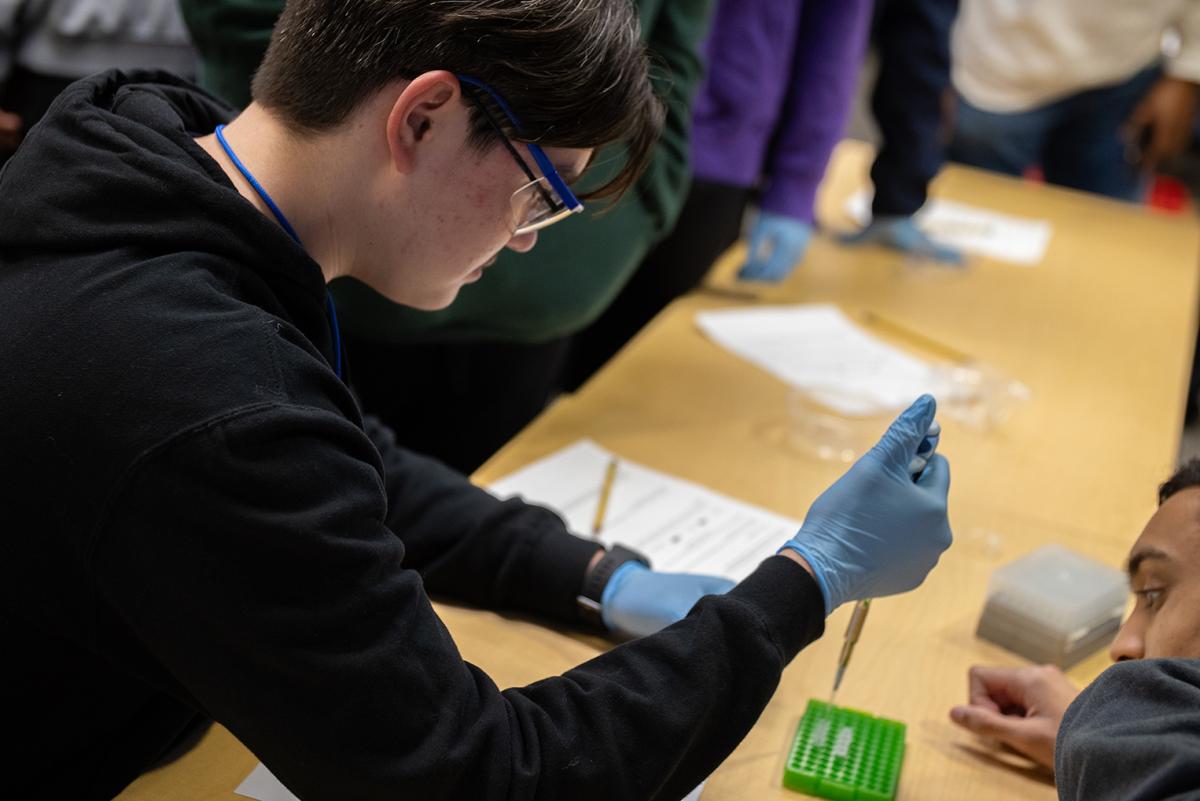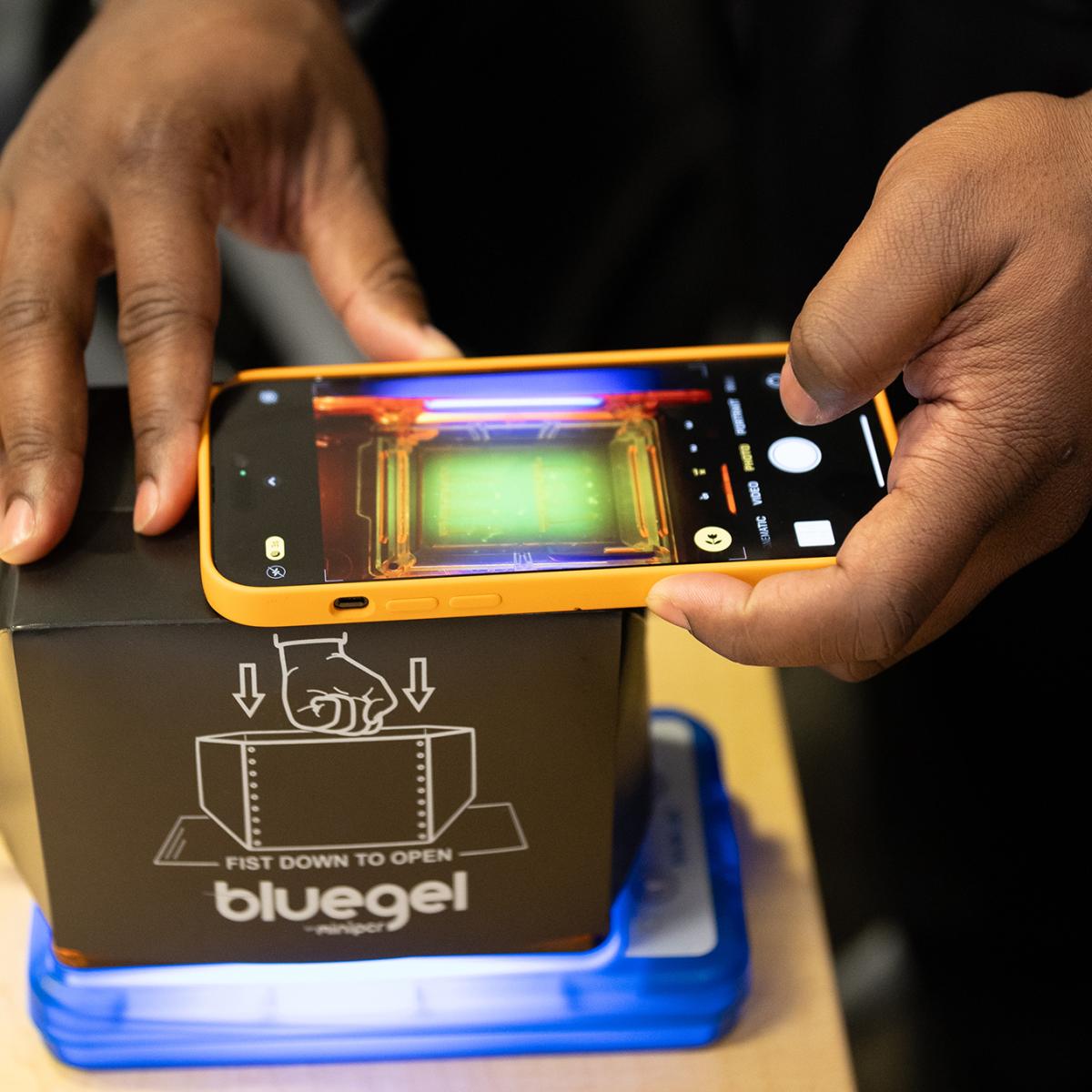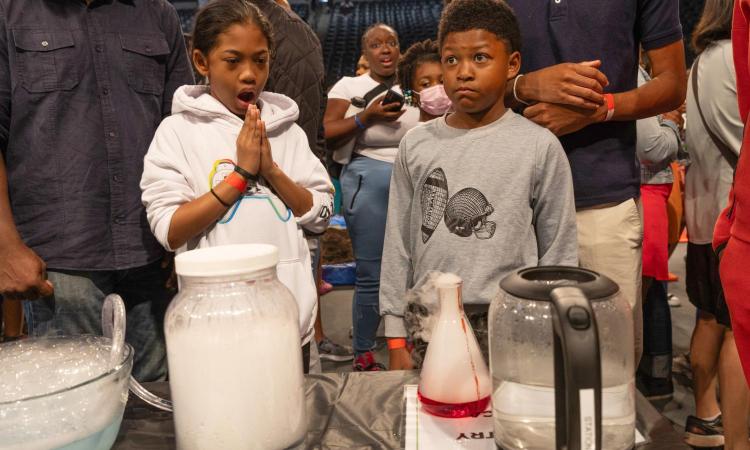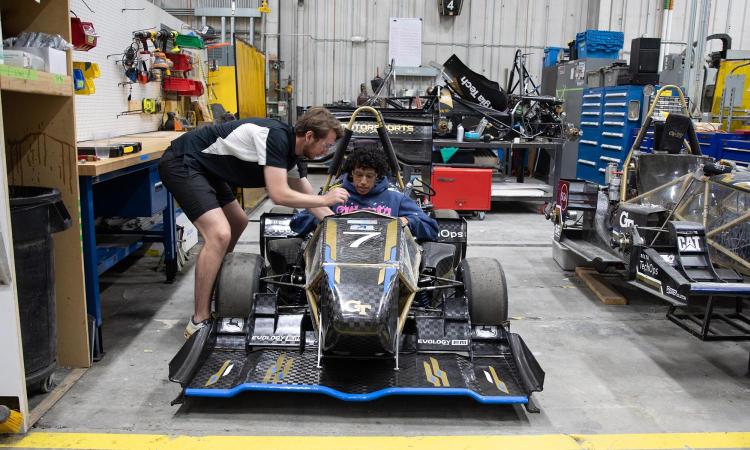BTE is a partnership with Johnson & Johnson to offer high schoolers from underserved communities hands-on experience and mentorship in STEM fields, providing a pathway to college and beyond.
(text and background only visible when logged in)

(text and background only visible when logged in)
On a quiet Saturday morning, while many high school students were sleeping in or making weekend plans, Rhyland Oneill and Axum Nickerson were sitting in a college classroom, fully immersed in the story of a guest speaker who had overcome immense obstacles to achieve success.
These two juniors are among nearly 50 high school students spending one Saturday a month at Georgia Tech in a new program called Bridge to Employment (BTE). Yet for Oneill and Nickerson, the program is more than just a monthly commitment — it’s a glimpse into career paths and opportunities they might never have imagined.
Through hands-on activities, mentorship, and field trips to places like the Tellus Science Museum in Cartersville, BTE is showing students from underserved communities how science, technology, engineering, and math (STEM) can shape their futures.
Launched in October 2023 through a partnership with Johnson & Johnson, the BTE program connects high school students from historically marginalized and underrepresented communities to STEM careers.
At each monthly session, about a dozen Johnson & Johnson volunteers, along with professionals from various fields, lead students through workshops, field trips, and guest lectures.
BTE is a national program that works with students for three years starting in 10th grade. The program Georgia Tech has a unique flavor however: It’s the only site bringing students to a college campus rather than going to their schools.
“You can’t see yourself in a college environment if you’ve never been there,” said Lakeita Servance, assistant director of K-20 programs in the College of Engineering. “Our goal is to make them feel comfortable here and show them what’s possible when they put in the effort.”
Servance said this approach gives students positive experience a college environment and makes Georgia Tech a more familiar place.

A student practices using a pipette to work with samples. (Photo: Jihoon Kim)
In addition to STEM activities and exposure, the program also focuses on college readiness — writing application essays, FAFSA and financial aid support, and preparing for college visits — particularly in the second year.
“We want them to be ready for whatever path they choose — college, apprenticeships, or straight into careers. But it’s about more than that. We’re preparing them for life,” Servance said.
Nickerson and Oneill, both sophomores when they started, had been thinking about studying engineering but weren’t sure what that might look like.
“I joined because my counselor recommended it, and I thought it would be good for my resume and college applications. But I didn’t realize how much it would open my eyes to different career paths,” Oneill said.
Nickerson echoed the sentiment: “I thought I wanted to do just engineering, but now I see all these different ways I could pursue it.”

Students in the Bridge to Employment program participate in a variety of workshops and hands-on activities, like this one using a simple system and a smartphone to do electrophoresis tests. (Photo: Jihoon Kim)
The program’s mix of guest speakers, field trips, and hands-on activities is helping the students understand the wide range of opportunities available in STEM.
Both Oneill and Nickerson talked about how inspiring it was to hear speakers share stories of persevering through hardship to achieve impactful careers.
One of the most memorable moments for was a guest speaker’s emotional account of overcoming poverty to become successful in STEM: “It motivated me to keep chasing my dreams,” he reflected.
Nickerson said that field trips, such as the visit to the Tellus Museum and a session on optics, were highlights of the program.
“It gave us a chance to see the science in action, and it was eye-opening,” he said.
In addition to the BTE program, both Nickerson and Oneill have gotten involved in Georgia Tech’s research-focused ENGAGES program for 11th and 12th graders.
Oneill is working in John Blazeck’s lab in the School of Chemical and Biomolecular Engineering, while Nickerson is part of Edward Botchwey’s lab in the Wallace H. Coulter Department of Biomedical Engineering.
BTE helped connect them to these opportunities earlier in their high school careers, allowing them to gain practical experience in real-world lab settings.
As the BTE program moves into its second year, and the focus on college readiness intensifies, Servance and the Johnson & Johnson volunteers will continue to guide students and help them gain the confidence and skills they’ll needed for whatever path they choose.
For Oneill and Nickerson, that future now seems full of possibilities.
“It’s made me more focused on going to a STEM-based college,” Oneill said, “and now I know there are so many different paths I could take.”
(text and background only visible when logged in)
Related Content

Thousands of K-12 Students Attend College’s First STEM Fest
Young innovators enjoy a day of drones, robotic arms, and more as the College partners with alumnus to bring STEM concepts to metro Atlanta students.

Summer Engineering Institute Gives High Schoolers a Taste of College
The College’s new weeklong camp blends engineering sessions and insider info on college admission to hook students on STEM majors.